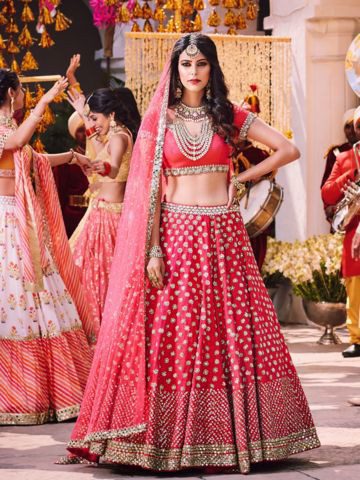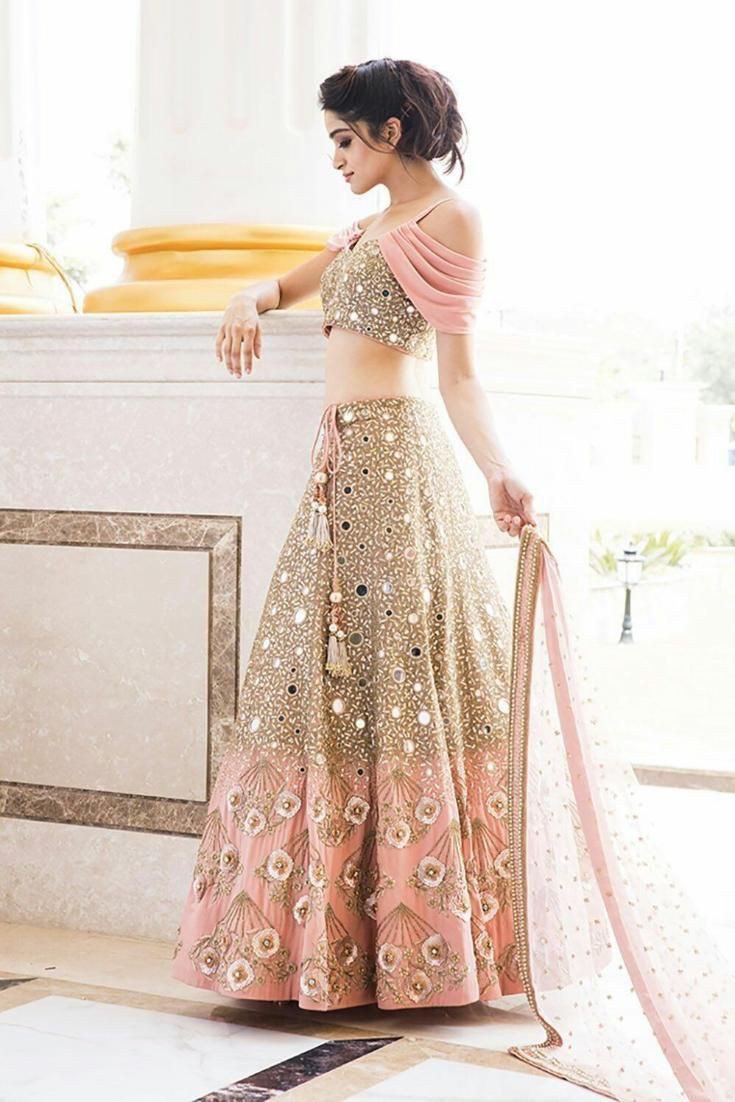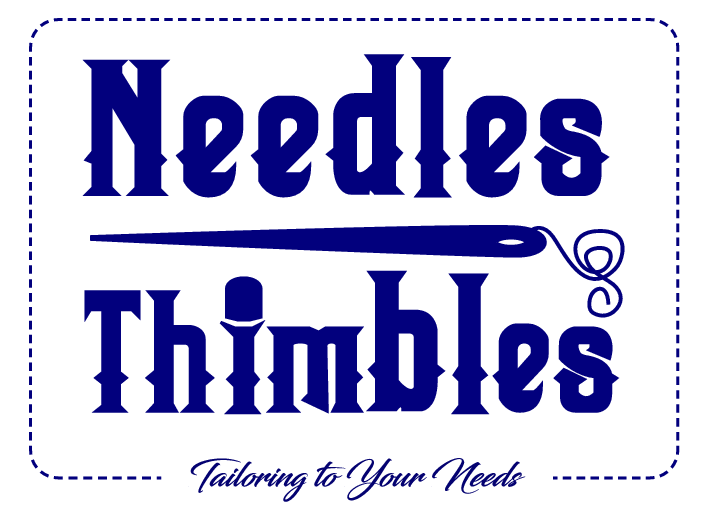Sheesha or Abhala Bharat embroidery, also known as mirror embroidery, has been popular for centuries. Embroidery is used to attach mirrors of different shapes to the fabric. A reflective luminescent metal piece of different shapes and sizes has replaced mirrors in recent years, particularly on apparel. Georgette, crepe, cotton, silk, and chiffon are just a few of the fabrics that are embellished with mirror work before being turned into attractive apparel and accessories, from sarees to cushion covers to belts.
Origin And History of Faux Mirror Embroidery
Mirror work can make a dull mono-colored fabric more appealing by producing a shimmering design. It is believed that sheesha or mirror embroidery was introduced to India due to various travelers visiting the region during the Mughal era. In this method, the fabric is embroidered with special cross-stitch embroidery to attach the mirrors, which are enclosed in a casing. In addition to attaching mirrors, cross-stitch embroidery is used to enhance the overall appearance of the garment. keeping the circular mirrors aside, other geometrical shapes such as square, triangular, hexagonal, and polygonal are also used for embroidery purposes.

Mica was initially used in the 17th century to embroider mirrors or Shisha. It was replaced by glass in the following years. During the reign of the Mughals, Iran introduced the usage of these ornamental ornaments. Surprisingly, though, none of the Mughal emperors wore clothing with mirrors.
Years of Influence
Rajasthan, Gujarat, and Haryana were the main patrons of mirror art, therefore these three states are the main centers for mirror production. But similar needlework may be seen in other regions of the nation as well, including the northeast and southwest. In these states, the inhabitants wear brightly colored clothing that is adorned with Sheesha craftsmanship.
Banni Jats, utilize mirrors of various sizes and shapes to decorate their cloth, tiny mirrors are sewn into the yoke of the Garari Jat’s garment using multi-colored threads. Mirrors are used in Gujarati Kathi embroidery to create animal faces and flower centers by sewing mirrors onto the eye part of the animal or flower. The mirror work has become a distinct art form in each state and community. When it comes to India’s needlework legacy, the mirror, or sheesha, is one of the most entrancing.

Mirror work is used to adorn and beautify a range of things, including sarees and garments. The items are in high demand not just in India, but across the world. Any event or style of décor may benefit from Sheesha work items.
Scenario of Present
A prominent indigenous art in the state of Gujarat, known as Abhala Bharat, is mirror work or embroidery, which comes in a wide variety of hues across the state. Ahmedabad is known for its mirror-embellished chaniya-cholis, torans, tapestries, and other fine handicrafts. Bihar, Karnataka, Madhya Pradesh, and Manipur, mirror embroidery is also prevalent in other states. In the film Ram Leela, Deepika Padukone wears bright Rajasthani costumes with mirror work embroidery.
Different Types Of Faux Mirror Embroidery
Men’s and Women’s Clothing
A piece embellished with Rajasthani embroidery takes on a whole new feel and appearance. The Kanchi, Ghaghra, and Odhni are the three most embellished garments worn by women in Rajasthan.
Certain embroidery elements can also be seen on men’s garments such as the angarkha, achkan, and Jama. Even Rajasthani shoes are mirror embroidered with colorful threads on them, which enhances the look

Embroidery Decoration On Camels
The saddles of camels and horses in Rajasthan are embroidered with small mirrors to make them look more attractive to the tourists.
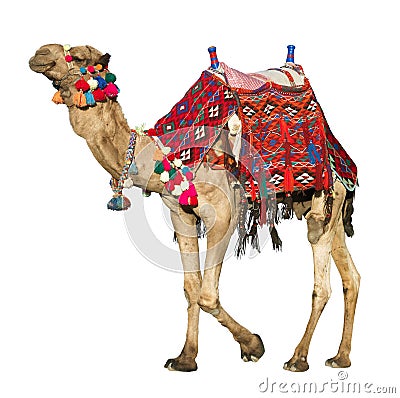
Pichwai Of Nathdwara
As well, in the temples of Rajasthan, one can find an embroidery known as the “Pichwai of Nathdwara”. Occasionally, golden threads are used to highlight the design. Green, yellow, and black stitches are used on the pichwai’s red cotton background. On their skirts, they have embroidered tree, bird, and animal motifs in various colors. This time, the women of Bikaner use a chunky red woolen scarf in their embroideries.

Embroidery on Leather
Embossing is used on leather products as well.
Miniature landscapes and festive scenes are embroidered on the leather ‘knuclepad’ products, as in Rajput paintings. Detail-oriented embroidery and careful group compositions go into this job.
There are mostly human figures, as well as floral and bird designs, embroidered on this piece.
Saddles made of leather are just as popular.

Karchobi Zari Embroidery
Karchobi Zari embroidery is a form of hand embroidery. “Karchobi” (needle embroidery with zari metallic thread) is also popular in Rajasthan. Bridal and formal costumes often feature this type of embroidery, which is performed with flat stitches on cotton stuffing.
Coverings, curtains, tent hangings, and temple chariots all exhibit this characteristic.

Community Embroidery Styles
In Rajasthan, each community has its own embroidery style. There is a distinct style of embroidery used by the Jat women of Sikar and Jhunjhuna, as well as the Meos of Alwa.
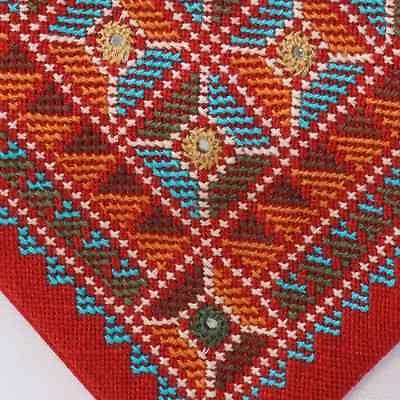
Best Examples Of Faux Mirror Embroidery
Mirror work and embroidery Reception Dress
Mirror work embroidery designs can brighten and add appeal to even the dullest of fabrics. In addition to Navratri functions, lehenga cholis make stunning wedding reception dresses. When it comes to functions, occasions, weddings, and parties, we all know that a little shimmer and shine is a must. For the best look, dress them up in stunning mirror work and embroidery designs.
Mirror Work Bridal Lehenga
There’s no better choice for you than this trendy mirrorwork bridal lehenga. It’s no secret that brides love the color red. This lehenga’s mirror work is exquisite. On the bottom of the lehenga, there are mirrors and stones to be found. Star-like reflections can be seen on parts of the choli and top of the lehenga. Similarly, a net dupatta has mirror work on it.
Yellow lehenga With Mirror Work
The classic yellow lehenga with mirror work is perfect for special occasions. For a stunning look, the lehenga is contrasted with a pink dupatta and brown border which enhances the look. The lehenga has a waistband and a broad mirror work which will be perfect for the upcoming traditional occasions.
Classic Golden Lehenga
This designer lehenga features a peplum style with golden and pink mirror work at the border. Very intricate and beautiful mirror work adorns the lehenga. This piece is one of a kind, making it a good investment. The golden color of this lehenga will make you stand out from the crowd.
Conclusion
The latest mirror work lehenga choli is a fantastic costume provided to us by Gujarat and Rajasthan artisans. The artful work that they do results in a set that is ideal for special occasions. Mirrors, which add a touch of glitz, are a great way to go. Choose from glass, foil, or paper mirrors to help you determine the overall weight of the garment. Because it is shiny and bright, kids adore this fantastic ensemble. Brides can have intricate mirror work lehengas that appear to be shining stars for the most important day of their lives.
Other Articles:-

